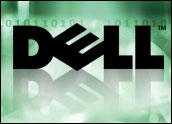
The recession’s effects on technology budgets, corporate belt-tightening and simple business survival have been well-documented, but less attention has been paid to how IT industry client and developer conferences can help end customers stabilize or even improve their situations. Make no mistake — the economy is affecting attendance and participation at 2009 events. Organizations are trimming spending deeply, even radically, in order to bolster cash reserves and preserve financial resources — but even a tourniquet needs occasional loosening to avoid severely damaging an already injured limb.
Should companies carefully consider expenses? Absolutely. Does the recession preclude participating in IT conferences? Absolutely not.
Though many are embracing the idea of social networking and virtual communities, real-world collaboration and face-to-face engagements still drive business for the vast majority of organizations. Conferences provide ideal environments for professional interactions, continuing education, and catching up on the latest news and trends. The recent EMC World 2009 conference in Orlando is a case in point. The event offered not only scores of sessions that drilled deeply into the company’s and its partners’ technologies and products, but also numerous opportunities to gain insight into EMC’s overarching strategic vision.
Clouds Everywhere
Some may dismiss “big tent” keynotes where executives offer carefully scripted takes on company policies. Certainly, those presentations are designed to cast companies in their best light, but individual interactions provide the opportunity to add color and shadow to those portraits. At EMC World 2009, the dominant keynote theme was the company’s vision of cloud computing.
That was hardly a surprise, since cloud has been a dominant topic for virtually every major IT vendor during 2009, including EMC. However, both the company and VMware have carefully honed their respective complementary cloud strategies for months, to a point where many competing cloud concepts appear dull by comparison.
What was particularly interesting at EMC World 2009 was the degree to which cloud themes inhabited every presentation — and the overall clarity of the company’s underlying intent. Those points stood out in EMC President Howard Elias’ “IT Infrastructure: Poised for Change” keynote session, where he hosted a panel of experts including VMware’s VP of Emerging Products and Markets Dan Chu, EMC’s SVP of Cloud Infrastructure Mike Feinberg, the company’s SVP of Resource Management Software Chris Gahagan and EMC CTO and SVP Jeff Nick.
The group engaged in a lively discussion and responded to numerous questions poised by conference attendees, reaching some general conclusions. Perhaps most important was the notion that for most companies, cloud computing is a journey rather than a destination. This fits in with the incremental nature of the vast majority of current cloud deployments and the still-evolving state of commercial cloud solutions.
‘Virtualizing Everything’
Although the journey to cloud computing presents some complex challenges and thorny problems — particularly in security and automated resource management — the group was unanimous in its belief that cloud computing represents the next evolutionary step for enterprise IT. That point, in turn, underscores EMC and VMware’s concept of internal (corporate datacenter-based) and external (hosted by service providers) cloud resources being blended in “private” clouds that offer organizations the best of both worlds: fully secure IT autonomy and seamless access to federated business applications and additional computing resources where and as they are needed.
This approach is more than a few steps beyond focusing on cloud computing as a simple infrastructure play, and it stands in marked contrast to the strategies of companies aiming to dominate emerging cloud-based service offerings.
Much of EMC’s cloud computing work is evident in offerings such as its Information Infrastructure for VMware solutions, which combines VMware virtualization with EMC’s information infrastructure to maximize IT flexibility and responsiveness.
Chad Sakac, VP of EMC’s VMware Affinity Initiative, hosted a presentation on EMC’s VMware-related efforts. Though “virtualizing everything” is the primary goal of his group’s work, Sakac noted that EMC is progressing systematically, pushing virtualization-enhanced functionalities “up the stack” of business-critical applications and processes rather than just moving them along.
The group has notched some significant early wins, including the leveraging of EMC disaster recovery and storage deduplication solutions in VMware ESX infrastructure environments. In addition, Sakac discussed efforts to extend the company’s SMARTS technologies to discover, analyze and monitor relationships between physical and virtual resources, and to utilize EMC ControlCenter to administer VMware ESX. On the horizon are the massive improvements in scalability and I/O performance offered by systems equipped with Intel’s new Xeon 5500 (Nehalem) processors. What are the bottom-line results of EMC’s efforts? To date, the company is the storage vendor of choice in nearly half (48 percent) of VMware environments, and EMC is likely to maintain or even extend its position as cloud computing continues to evolve.
Leveraging Loyalty Data
Virtualization and cloud are not simply “big picture” strategic issues at EMC but, instead, percolate tactically through most all of the company’s efforts. For example, EMC’s consulting and IT services organization delivers numerous offerings to help clients determine just how prepared it is to take on virtualization and the best way to pursue such efforts.
While cloud-related services are still under development, the group has spent the past two years building out and enhancing its enablement program for channel partners, who stand to profit handsomely as virtualization spreads further into the IT infrastructure market. Anticipating that shift, EMC is now ensuring that every company solution is built out in both physical and virtual modes.
Still, what good are commercial products and services without satisfied, loyal customers? That issue was addressed by Jim Bampos, VP of EMC’s information and quality management group, who detailed the collection and analysis of data concerning enterprise customer satisfaction with EMC’s own and competitors’ solutions and services.
While the effort is not particularly unique — virtually every IT vendor tracks similar data — EMC’s ability to dynamically equate satisfaction and dissatisfaction with short- and long-term customer loyalty trends appears groundbreaking. It certainly offers the company remarkable insight into the state of its own and others’ market performance today. Additionally, accurately assessing customer loyalty is likely to play a singular role in helping to ensure the success of EMC’s cloud computing solutions.
Overall, attendance at EMC World 2009 was time well-spent. Rather than simply talking up the cloud — throwing effervescent verbiage at an amorphous subject — EMC clearly demonstrated how and why it is getting down to the hard work of building the technologies and infrastructures necessary to support next-generation cloud-based services and solutions. The way to that future is neither easy nor inconsiderable, but EMC World 2009 showed the company fully ready, willing and able to ensure a place in the clouds for itself and its partners and customers.
E-Commerce Times columnist Charles King is principal analyst for Pund-IT, an IT industry consultancy that focuses on how business technology evolution affects vendors, their customers, and the marketplace.












































The statement that "real-world collaboration and face-to-face engagements still drive business for the vast majority of organizations" is little more than a load of goat manure. The entire emphasis of the event was virtualization. Why couldn’t a live webcast of the event have been presented, available for later downloaded viewing? This would have averted costs in fuel, lost time at work, and numerous other expenses. The real reason for "real-world collaboration and face-to-face engagements" is little more than the opportunity to have a few drinks together as well as to squander time in more illicit activities. Let’s not kid ourselves. The technology is available and should be utilized. But perhaps that little shared toddy and the chasing of t*** is more important to the "driv(ing of) business for the vast majority of organizations.